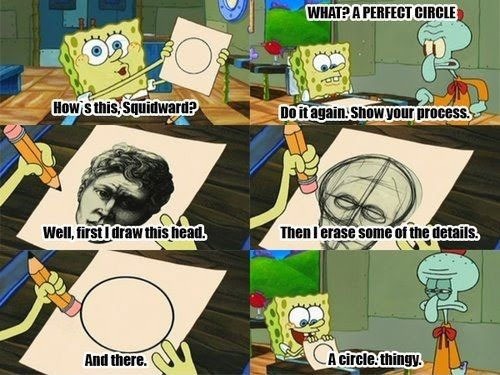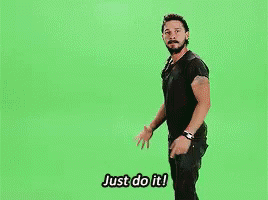#kids posting art on online people thinking they’re automatically looking for advice to improve
Explore tagged Tumblr posts
Text
If you see a kids anime style drawing and feel the need to comment that they need to study anatomy maybe you should shut the fuck up and let them draw without making them feel like they need to get better, do what you want forever especially if you’re only 11 or something, draw your anime split face good vs evil character personality drawings and naruto OCs and have fun. Goes for any age honestly, art is art, it doesn’t need to be well done it just needs to be, it just needs to exist, and not everyone’s goal is to be a master people need to stop giving unsolicited art advice to literal children or I’m going to start eating shoes
#the minister speaks#AGHH#kids posting art on online people thinking they’re automatically looking for advice to improve#like oh maybe just let them share the art they’re proud of for fucks sake I’m going to throw potatoes at you
47 notes
·
View notes
Note
So I would love to progress on my art and try comics any tips? ÙwÚ
Hi! I’m so sorry about the late reply. D: I hope you don’t mind if I take this opportunity to address all the anon messages about how we can improve as artists.
I have a tough time answering this question because there is so much I need to learn. I’m super flattered that some of you feel that my art is good enough to ask me for tips, first of all!! So thank you, guys.
It’s a struggle because I only recently started taking up art again. So I’ve forgotten a lot of the things. So I’m probably not the best person to ask about this.
I used to draw all the time as a kid, but after high school, I stopped drawing. I stopped drawing for almost a decade, pretty much. I really regret it. I feel like I could have come such a long way if I did keep going. My parents really discouraged me from pursuing art, even just as a hobby, too. Even when I left home (I’m back now tho), my ex-spouse, greatly discouraged me from doing art too. I mean, “proper” art. They told me my art wasn’t “real art” because it’s not studio art, it’s “sellout” art, like anime/cartoons/fanart. I had even worse self-esteem as I do now, and I listened to them and gave up. I convinced myself I hated drawing.
Please don’t deny yourself things that make you feel engaged and connected. If drawing makes you feel good, if it makes you not realize how much time has passed and makes you feel like you’re accomplishing things, even little by little, please don’t stop. Even if you suffer from depression and feel like things like this are pointless, remember that just doing things in general will help you. Drawing is an awesome way to get into the flow state. To me personally, it’s almost like a meditative state and I find it helpful in dealing with chronic pain and mental health issues.
Anyways, I’ll try to compile some advice sort of things.
ART IN GENERAL
1. Draw what you enjoy! I think the most important thing is to draw what you like. It’s okay if it’s “dumb stuff”. Draw your favorite characters or pairings from your favorite tv shows if that tickles your fancy! You’re much more likely to be spending more time drawing if you’re drawing stuff you like. And as long as you’re drawing, you’re improving. (But still, challenge yourself and get out of your comfort zone!)
Especially for those of you who are planning to pursue art as a career, it’s essential that you don’t view practicing art as a chore.
2. Draw from life. If you really want to take your art to the next level, drawing from life is vital! I think many of us have come across artists who are just amazing, but there are things that look a little “off”. For example, the anatomy doesn’t look quite right, or the perspective is a little wonky. Things like that can be a tell that they’ve learned to draw from other people’s art rather than from life. Or just haven’t practiced the basics enough. (My art isn’t amazing or anything close to that lmao, but it definitely suffers from this. I need lots of life drawing practice.)
There is nothing wrong with learning from your favorite artists, but to really train your “artist’s eye”, you need to strip away all the stylistic choices and go back to the basics. Training that Eye is one of the most crucial things you could do as an artist.
Just take a piece of paper, a pencil and start drawing what you see. If you can, take figure drawing classes at your local community college, or draw the animals you see at the zoo. Sit on a bench and draw the scenery in front of you. Over time, you’ll start to recognize common patterns, simplify/think of things in terms of lines and shapes.

If you can’t afford a class or have the ability to go outside easily, drawing from photographs can be the next best thing. (See the Resources below for an online figure drawing tool.) I’m not experienced enough to definitively say why this isn’t the #1 idea, but from what I hear, there are things that you’ll miss out on, such as subtle shifts in shadows, colors, and other things that will happen from small movements in pose changes, a cloud moving, or whatever else. A different “feel”, if you will.
With the digital art boom, a lot of artists are learning how to do cool digital effects and fancy things, but forgoing basic anatomy, perspective, shading, etc. Which is all fine if you’re just having fun, but isn’t the best idea if you’re really serious about improving. Practice the fundamentals!
(If you have been dreaming about CalArts at one point like I did when I was in high school, one advice I came across from everyone who went there was to draw from life. All the time. It’s not an answer I expected from people who draw funny looking characters all day. You mean all these people who draw such simplified cartoon people and animals can actually draw like masters? Perfectly rendered bowls of fruit? I didn’t realize how much work goes into animating simple characters.)
3. Put in the time.
It’s really easy to get suckered into just watching “how to improve” videos all day and thinking about improving. Watching how other artists work is an important learning tool, but you’ll never actually make progress if you aren’t practicing.
Sometimes, the best thing to do is to not think about it. Just do it.

It’s like when I’m spending a whole lotta time thinking about getting physically fit than just, you know.. just doing it. “Tomorrow for sure.”
It may seem like it’s worthless, but doing those lame 5 push-ups a day instead of the 20-minute workout you wanted to put in, is better than nothing at all. You are making progress, no matter how small it may seem.
Make it a habit to practice every day. That way, you don’t even hesitate. It’s as automatic as brushing your teeth.
All the artists you see who have fantastic, awe-inspiring art may seem like Unreachable Gods sometimes, but those artists didn’t just pull that out of their ass one day. They put in hours and hours and hours of work. Let’s not disrespect other artists by ignoring that and chalking it up to “talent”. No one is born with an innate ability to draw. WE can get there too if we practice!
I want to get good enough to draw the things I have in my head one day!
Some resources that may be helpful:
Draw a Box - This is a site for free lessons for absolute beginners. Look under “Lessons” to learn. The creator of the site is the mod for r/ArtFundamentals. You can post your work there to get critiqued.
Check out Proko’s videos on gesture drawing, art fundamentals, etc. Daily routines of successful artists.
Use this site to practice figure drawing, gesture drawing - Set aside some time to practice drawing people and animals every day. Start trying to see things as lines, shapes, and go big. Don’t get too caught up in the details, and tiny drawings. Learning to draw fast (not draw FAST as in speed, but as in capture the gesture in a post, the “feel” of the movement) will force you to do this more, and with more experience, make your figures less stiff looking.
And it’s okay if you’re aren’t good at it. You’ll make loads and loads of shit drawings until you can get decent.
I’m most definitely in this stage right now, trying to train my Artist’s Eye. As in, I can’t just draw a figure from memory. I don’t really know what goes where without a reference, or how they move, etc. You can tell by how stiff my drawings look.
Lulusketches How to Improve video - She has similar advice, but her point about looking at “Art of” books something I have come across from multiple professional artists; Her advice on worrying about finding your own “style” is really good too. Do challenges like she said!
Her playlist of art tutorials & advice is great. They’re short and sweet. Her beginner digital art tutorial got me started on digital art (the one with Ginny Weasley).
Not free ($30 a month), but these online Schoolism classes look helpful. It’s run by Bobbie Chiu. I saw some great reviews and I want to try them someday. They’re taught by artists in the animation/film industry. But you gotta have a basic grasp on digital art/photoshop for many of the classes, I think? I’m not 100% sure. They’re pre-recorded video lessons.
You can pay more for feedback from the teachers, but you can also just use it as a self-learning guide.
This drawing faces from any angle video was pretty helpful for me. The artist has loads of other tutorials.
COMICS
I don’t feel qualified enough to give much advice on comics. I mean, I don’t even draw the lines for the boxes, haha.. However, these comic books are basically required reading for some courses:
Scott McCloud’s Understanding Comics & Making Comics.
I can’t remember which one it is that I read, I think it was Making Comics? But wow, if I remember correctly, it was FULL of really useful things about how to make effective comics. I lost the book while moving years ago, but it was FANTASTIC learning material. I loved every panel of it.
He talks about everything from perspective, placement of characters, speech bubbles, how big panels should be, etc.
If you can afford it, get a used one and start reading! Even if you don’t want to make comics just yet, it’s super interesting.
#art#comics#art reference#art resources#asks#text#okay i fixed some of the links now#added better stuff
259 notes
·
View notes